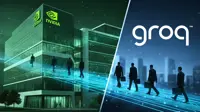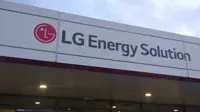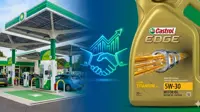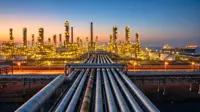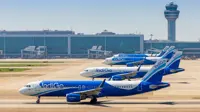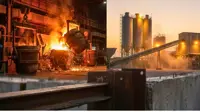Ford Fusion Hydrogen 999 aims for land speed record
By Our Corporate Bureau | 14 Aug 2007
The Ford Fusion Hydrogen 999, the world's first and only production-based fuel cell racecar, accelerated on the test lab dynamometer to 191 miles per hour. Its power inverter issued a piercing whine and water sprayed from its exhaust pipes. It was another successful test run on the road to Bonneville.
Ford's fuel cell research team will put the Hydrogen 999 to the ultimate test during Speed Week, 10 August to 17 August, at the famous Bonneville Salt Flats in Utah, where hundreds of teams gather every year to set land speed records in a variety of mostly experimental vehicles.
After more than one year of design and development and, 10 years of hydrogen vehicle research, Ford hopes to set the first land speed record for a fuel cell vehicle based on a production car.
"We're the first manufacturer to build and race a fuel cell vehicle at Bonneville. This is a very exciting opportunity to showcase Ford's alternative fuel vehicle talent by attempting to reach our goal of 200 miles per hour," said Matt Zuehlk, lead engineer on the project.
Zuehlk added that Ford's goal in attempting this record is to further expand its technological horizons with fuel cell-powered vehicles, because it is a fuel that could someday play a key role in meeting the energy needs of the transportation sector. The Ford Fusion Hydrogen 999 is Ford's latest environmental innovation and is another step on the road toward commercially viable hydrogen fuel cell vehicles.
The project began in 2004, when students from The Ohio State University Center for Automotive Research set a land speed record for battery electric vehicles in the Buckeye Bullet at 314.958 mph. Within six months of this accomplishment, the students came to Ford with a proposal to build the Buckeye Bullet 2, powered by hydrogen fuel cells. This marked the beginning of a partnership to attempt to set the world's first hydrogen fuel cell land speed records in both a streamliner and a production based Ford Fusion.
The partners - Ford, Ohio State, Ballard, and Roush - developed into a cohesive team leveraging the strengths of each organisation. Ford's 10 year history in hydrogen fuel cell vehicle design and development, OSU's accomplished history in land speed racing and high power electric drive systems, Ballard's industry leading hydrogen fuel cell technology, and Roush's racing and fabrication expertise were combined to field two cars sharing the same core drive system.
Certainly, this is not the first time Ford Motor Company has used racing to advance the automobile. The Fusion Hydrogen 999 is named in honour of Henry Ford's land speed racer from 1904, which topped 91 mph on a frozen Lake St. Clair. This vehicle, originally dubbed the 'Arrow', was later renamed the '999'.
The Hydrogen 999's exterior looks like a standard Fusion with a few key differences. It's more aerodynamic, lower to the ground, has no side mirrors and lacks a grille to let air in, because there is no radiator. At approximately 6,700 pounds with driver and a fully loaded cooling system, it's about twice as heavy as a normal Fusion for the sake of stability.
For the second vehicle in preparation, Ohio State's Buckeye Bullet 2, Ford researchers provided overall project coordination and fuel cell drivetrain expertise for the 'streamliner'. The university team aims to break its 'streamliner' speed record of 315 mph set in 2004 by the all-electric Buckeye Bullet 1.
"The Ohio State students are engineers in their own right who could come to work for Ford today," Zuehlk said. "It's been great working with them and we hope to recruit some of their team."
For the project the fuel cell team recruited Rick Byrnes, a veteran Bonneville racer, who retired from Ford in 2000, after 32 years as a component design engineer in Powertrain Operations. He will pilot the Hydrogen 999 at Bonneville, where he joined the 200-MPH Club in 1998 racing a Merkur XR4Ti.
"The passion, the intensity and commitment of this team is inspiring. They have even more passion and commitment than I remember of the Ford I left behind in 2000," Byrnes said. "What they'll learn from this project is the key to what the company will produce in the years to come."
Ford Alternative Fuel Vehicles
The Ford Fusion Hydrogen 999 is only the latest alternative fuel project at Ford Motor Company. The automaker also has a fleet of 30 hydrogen powered Focus fuel cell vehicles on the road as part of a worldwide, seven-city program to conduct real world testing of fuel cell technology. The 30-car fleet has accumulated more than 540,000 miles since its inception in 2005.
Ford also is conducting tests with the world's first plug-in hybrid electric vehicle, the Ford Edge with HySeries Drive. The Ford Edge with HySeries Drive uses a series electric drivetrain with an onboard hydrogen fuel cell generator to give the vehicle a range of 225 miles with zero emissions.
Currently, Ford offers gasoline-electric hybrids including the Escape Hybrid and Mercury Mariner Hybrid. The company will also offer hybrid versions of the Ford Fusion and Mercury Milan in 2008.


